- Home
- Tom Clancy
Into the Storm: On the Ground in Iraq sic-1 Page 2
Into the Storm: On the Ground in Iraq sic-1 Read online
Page 2
As he pictured in his mind the layout of Iraqi forces, Franks turned his attention to some of the number designations of Iraqi brigades and divisions. They had been the subject of many discussions among intelligence staffs — was it the 12th Division over here, and the 52nd Division over there, or the other way around? These were interesting discussions, and important historically to get the record straight, yet for the purposes of the upcoming attack, he did not think such matters had any practical consequence. Getting unit designations right is valuable for history books, but what he really needed to know was how many divisions and brigades there were, and where they were located. And he had a very good idea of that.
Turning his thoughts back to the Iraqi VII Corps, Franks pictured their five infantry divisions forward on line, behind a barrier system that was less complex moving west from the Wadi al Batin. (The Wadi is an ancient, dry river valley, angling south and west out of Iraq into Saudi Arabia. Along the way, the Wadi defines the western boundary between Kuwait and Iraq.) The division numbers from east to west were the 27th; 25th; 31st; 48th; and 26th. The tactical reserve, located behind the 25th and 31st divisions at a depth of fifty to seventy-five kilometers, was the 12th Armored — actually the 52nd (it was one of the unit designations they'd gotten wrong). Again, it didn't really matter to Franks whether it was numbered the 52nd or the 152nd. It did matter that there was an Iraqi mechanized division that could move; if it could move, it could interdict his logistics or otherwise get in the way of his attacking force. In order to make sure that didn't happen, he had assigned to the British the mission of defeating that division.
The Iraqi VII Corps's westernmost division, the 26th, had two brigades forward in the defensive line. In order to refuse that western flank, they had an infantry brigade in depth, stretching perhaps fifty kilometers to the rear of the defensive line. It was this 26th Division that the 1st Infantry Division, the Big Red One, would penetrate in their breach mission and that the enveloping force would overrun.
The Iraqi VII Corps had assigned their artillery to frontline divisions and to their subordinate brigades located with those units. Other artillery retained under their corps control was positioned to support the frontline divisions. Total gun count along that initial Iraqi VII Corps defense before the air attacks began was approximately 400 to 500, with over half that in range of the 1st INF breach.
Though Franks was relatively sure about what they were facing in Iraqi VII Corps, he was less sure of the organization of their deep forces and how they would fight. He knew the Guards were their best and most loyal forces. They also were the best equipped, mostly with Russian-made T-72s, BMPs, and self-propelled artillery. In the Iran-Iraq War, they had done well. In the invasion of Kuwait, they had moved and fought efficiently. Even though air had hit them hard, there wasn't much doubt that the RGFC would fight.
Franks's key question, then, was what the Republican Guards would attempt to do when or if they discovered the attack. Defend? Maneuver toward VII Corps units to meet their attack? Attempt to escape up Highway 8 to Baghdad? (Highway 8 was the main route on the south side of the Euphrates between Basra and Baghdad.) Retreat toward Basra? Franks's aim was to fix them where they were, or to surprise them before they could move.
There were other Iraqi heavy divisions in the corps's zone as well, the 10th and 12th Armored divisions, formed into what he discovered later was the "Jihad Corps." What would these intermediate forces do? In addition, another heavy division, the 17th, was located near the RGFC, but was not in the VII Corps zone. The presence of these formations and their subordination to the Guards would make a difference in how the Iraqi high command chose to fight VII Corps. Not counting the three RGFC infantry divisions, that gave the Iraqis a six-division theater reserve, three RGFC heavy divisions and three other armored divisions.
The forces arrayed by the Coalition spread from the Persian Gulf to approximately 600 kilometers inland. VII Corps's mission was to destroy the Republican Guard in their sector of attack.
The Iraqi defenses were arrayed in three belts. The frontline consisted primarily of infantry units defending behind a massive obstacle belt of minefields, trenches, and wire. The tactical reserve was poised to reinforce wherever the front lines were breached. The operational reserve — the Republican Guards and other units — defended the southern approaches into Iraq and were capable of counterattacking the Coalition force.
As he played all this in his mind's eye, he also considered something else: the location of the Iraqi army was only one piece of the intelligence picture. The other piece was how strong were they? What was their ability to fight? Even at this point, he was not very confident that he knew the answers to that.
In his zone of attack were two very different-type forces. Except for their mechanized infantry reserve, the Iraqi VII Corps consisted of five frontline conscript infantry divisions, fixed in a World War I-type defensive arrangement. VII Corps had had some combat against these units over the previous two weeks, and prisoners and deserters had been taken. After these Iraqi soldiers had been questioned about their dispositions, strength, unit identification, and morale, Franks and his commanders had gotten a pretty clear picture of the Iraqi VII Corps. The infantry divisions were brittle and would easily crack at the first hard, sustained ground attack. They'd been hurt badly by U.S. air, Apache, and artillery attacks, and by the desertion of some of their own leadership. The conclusion was that they were between 50 and 75 percent strength. They did not have much fight left in them.
But Franks had no such clear picture of the RGFC, or of the other Iraqi armored/mechanized formations. Prewar air campaign objectives had called for the reduction of RGFC strength by 50 percent by the time the ground war started. Theater had selected that number based on an analysis of friendly and enemy force ratios. If that figure was achieved, they'd thought, VII Corps would have enough combat power available to finish the destruction in direct ground combat.
As it happened, none of the ground commanders had participated in setting this objective. And when they had learned of it, most had thought it would not be achievable unless the attacks went on a long time.
The real problem was not the specific objective (whether 50 percent or whatever). The problem was that there was no reliable method for determining if the objective had actually been achieved. There was no way of knowing, in fact, if they were even close. Precise bomb-damage assessment (BDA) was difficult. It was relatively easy to figure damage done to a fixed target such as a bridge or an aircraft shelter by a precision-guided weapon, but damage against mobile armored units by dumb bombs or 30-mm cannons from 10,000 feet and higher — now, that was harder.
So VII Corps estimates of Iraqi RGFC strength remained quite conservative. Though in the plans they had briefed they had assumed the stated objective of 50 percent, they always hedged their bets. Their own estimate was that Guards and other Iraqi armored/mechanized units would be closer to 75 percent when VII Corps hit them. Corps also thought that, unlike the frontline infantry divisions, the Guards would fight, and not run away or desert.
As Franks weighed these numbers, he became aware that the real art was to assess enemy fighting capabilities, competence, and willingness to fight. Locating them and determining numbers was the easy part. It was almost scientific. It was this other part that was the art. You wanted neither to overestimate nor underestimate the enemy.
Fred Franks's experience in Vietnam had influenced him on this matter. If he erred, he wanted to err on the side of overestimating the enemy. He wanted to be sure that, this time, the results would be different.
In the final analysis, Franks knew that he had a decent intelligence picture for Iraqi unit locations but a poor picture of RGFC strength, fighting capability, and competence.
He was aware again that he had to come to a conclusion. He would also need to predict and influence their tactical maneuver. Would VII Corps be able to keep them fixed where they were and surprise them in the size and direction of the
attack? Would they come toward his advancing units? Would they attempt to go up Highway 8? Would they attempt to escape out of the theater? And he also knew he would have to decide all that about twenty-four hours after the VII Corps attack at first light on 25 February.
TERRAIN
From his perspective as corps commander, Franks had not spent a lot of time examining terrain. In Europe it had been vital to determine key terrain — the pieces of ground that dominate an area — and to look very closely at avenues of approach — the areas that allowed rapid movement by large formations in the direction in which you or the enemy wanted to go. They had examined the cross-country traffic ability — the capability of the terrain to allow heavy armored movement — and looked at roads, bridges, airfields, towns, and cities, and at how they might influence operations and logistics.
Not much of that mattered here. This was desert. Fighting here was like naval surface warfare on the open ocean. Here they could essentially take their fleet anywhere, and in almost any formation they wanted. Now smaller units in the corps had to be concerned with the normal rises and drops in the desert as they attacked. They also had to be aware that in some places — especially in 1st AD sector — the sand was softer than in others (and thus less trafficable for heavy armor), and that in some places there were narrow defiles.
So that they could have the best available intel about such areas, a Special Forces night flight had been sent forward into the VII Corps zone to look over the terrain. When the flight had determined that the terrain would hold anything Franks wanted it to, he'd figured he could maneuver his fleet anywhere. So could the Iraqis, he realized. But as it turned out, they anchored their fleet with short chains. Since they had no confidence in cross-desert maneuver (and they did not have access to GPS receivers), the Iraqis mainly stuck to their roads.
In fact, weather turned out to be a bigger factor. Severe local sandstorms, called shamals, hid VII Corps attacks from Iraqis, but also limited some use of Apaches, and troops had to fight through cold night temperatures and torrential rains.
TROOPS
The VII Corps situation was excellent. The plan was sound and well understood by all units; they had rehearsed and war-gamed it. The Corps was at full strength, and the equipment availability of major combat assets such as tanks and Bradleys was at 97 percent. That was better than in the Corps's best Cold War days in Germany as part of NATO.
The commanders were ready, and the teamwork among them was tight. It was a talented team. Franks's major maneuver commanders were Major General Tom Rhame, 1st Infantry Division; Major General Ron Griffith, 1st Armored Division; Major General Paul "Butch" Funk, 3rd Armored Division; Major General Rupert Smith, 1st (U.K.) Armored Division; Colonel Don Holder, 2nd Armored Cavalry Regiment; and Colonel Johnnie Hitt, 11th Aviation Brigade. Brigadier General John Tilelli commanded the 1st Cavalry Division, which was to be released to CENTCOM as theater reserve the next day. The corps artillery commander was Brigadier General Creighton Abrams; and Brigadier General Bob McFarlin was the commander of the Corps's almost 27,000-soldier Support Command.
The troops were mentally ready, and they were trained to a razor's edge. During the weeks before combat, they had trained hard to adapt their tactics to the desert and to practice their tasks. They also had been in combat against Iraqis. During the two weeks prior to the attack, Franks had wanted some actual fighting in order to get his forces mentally ready to fight, as well as to conduct feints to deceive the Iraqis as to the actual point of attack, and to destroy artillery in range of the breach site. As a result, the artillery and aviation of every major maneuver unit in VII Corps had by now participated in a combat action against Iraqi frontline units.
TIME
The timing of the attack was clear. They would attack the day after tomorrow at G+1 at BMNT.
Franks's best commander's estimate was that the whole operation would take about eight days: two days to get through non-Guards Iraqi forces and the 150 to 200 kilometers to the Guards themselves, four days to destroy the Guards, and two days for consolidation. The Third Army estimate had been two weeks for the ground offensive and another four for consolidation.
That was the METT-T situation facing Fred Franks as he sat in his sleeping shelter, gazing out the opening to the now-quiet life of the main command post.
It was a very familiar scene. It was the Army's practice to use three command posts, called the "tactical," "main," and "rear" posts, depending on their closeness to the enemy. The close — or immediate — battle was led using the tactical command post as a base of operations; the rear post directed all the logistics or combat service support of the unit; and the main command post kept track of the immediate fight and the deeper fight beyond that one, and planned the battles to be fought in the future. At the main command post, all three command activities were normally fully coordinated, as was air support. The main command post was also the link to higher headquarters, both for operational matters as well as for intelligence — all downlink terminals were located there, which brought direct theater or national intelligence system "feed" to the unit.
Franks pictured the main CP in front of him — essentially, a large camp-site with tents and truck vans. The area of the CP covered about 500 meters in diameter and perhaps a kilometer in circumference. The entire area was behind a circular, ten-foot-high berm of sand shoved up by Corps engineers. About ten feet outside the berm was triple-strand concertina barbed wire arranged triple-thick and piled in tightly tangled coils. At regular intervals around this berm were six-by-six-foot bunkers, with up to two feet of overhead cover. These were manned by armed soldiers with communication to a central post commanded by the HQ battalion commander.
There was only one entrance to the command post area. To get in, you had to identify yourself to military police, who would pull the temporary sliding wire barrier out of the way, and then you had to drive down a serpentine course past high mounds of sand. Only a few vehicles were permitted inside, and these were directed to a parking area just inside the entrance. There all personnel would dismount and walk to wherever they needed to go. To allow much vehicle traffic inside the CP was to stir up so much sand that it was harmful to the equipment, plus it wasn't safe at night with no lights, and it made life unbearable for the troops. Most vehicles parked outside, and their occupants walked to their destination. Troops manning the entrance could spot vehicles approaching from a long distance.
Inside the perimeter, the truck vans were arranged according to their individual function: Staff elements were located close to other staff elements with whom they needed to coordinate. For example, intelligence and operations were always next to each other, and Air Force air, corps artillery, and Army aviation stayed close together.
These truck vans were what the U.S. Army called "expando vans," like Franks's own sleeping shelter. They were five-ton trucks with a steel enclosure on the back. When the vehicle was stationary, this could be "expanded" by about two feet on each side, thus increasing the work area. The inside of these vans took on various physical configurations depending on their function. Inside dimensions were about twenty by fifteen feet, and they were prewired, so that when you stopped you could plug in cables and have lights. In other words, they were essentially portable offices.
At the main CP were about a thousand soldiers and perhaps two hundred vehicles. Because of the time needed to install long-haul communications for both intelligence and command, and because of the network of cables and wires that had to be hooked up to provide electronic networking capability between these vans, it was not very physically agile.
The picture of a high-tech CP Franks's unit was not. Patton or Bradley would have been right at home here. They used paper maps with hand-drawn symbols on acetate coverings to depict boundaries, phase lines, and objectives, the usual control measures for a corps. They used line-of-sight radios and longer-haul comms that were the equivalent of radio telephones to reach Riyadh or the United States. They used commercial fax machi
nes to transmit hard copies of small papers. For larger acetate overlays, they drew them one at a time and sent them via land or air courier to subordinate units. They had computers for analysis, word processing, and especially intelligence. But in the end, the central focus of all the friendly and enemy information was a paper map posted by hand, not a large-screen computer monitor. It was around that map that they held their discussions, and where Franks made whatever decisions he made in the CP and where he gave guidance.
During the war, Franks would not stay in the main CP, but in the smaller, more mobile TAC CP closer to the fight. He wanted to be up front, where he'd have a more precise feel for the battle.
In Riyadh as well, the battle was tracked on paper maps. In order for information about friendly and enemy units to be accurately and timely posted on those maps, the staff had to rely on voice phone calls and written situation reports that were hours old. In such a setup, where there was no automatic and simultaneous electronic updating of these common situational displays, you had a built-in prescription for misunderstanding.
EARLIER THAT DAY
Franks let his attention stray back over the events of the day, and especially his visits to the units.

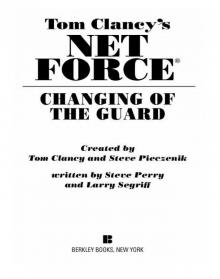 Changing of the Guard
Changing of the Guard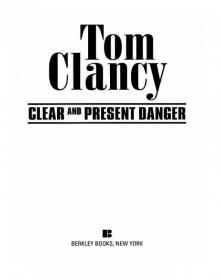 Clear and Present Danger
Clear and Present Danger Hounds of Rome
Hounds of Rome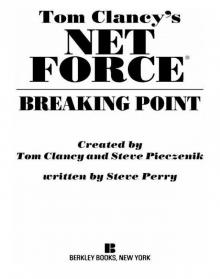 Breaking Point
Breaking Point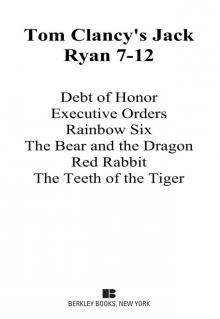 Tom Clancy's Jack Ryan Books 7-12
Tom Clancy's Jack Ryan Books 7-12 Full Force and Effect
Full Force and Effect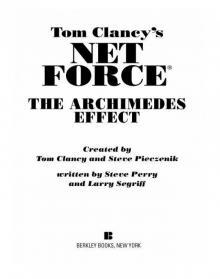 The Archimedes Effect
The Archimedes Effect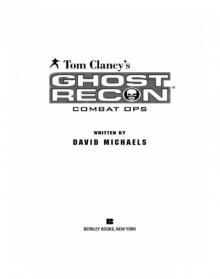 Combat Ops
Combat Ops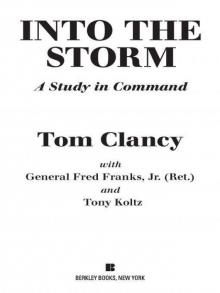 Into the Storm: On the Ground in Iraq
Into the Storm: On the Ground in Iraq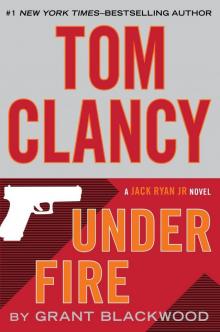 Under Fire
Under Fire Point of Impact
Point of Impact Red Rabbit
Red Rabbit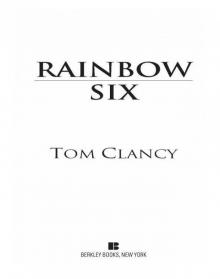 Rainbow Six
Rainbow Six The Hunt for Red October
The Hunt for Red October The Teeth of the Tiger
The Teeth of the Tiger Conviction (2009)
Conviction (2009)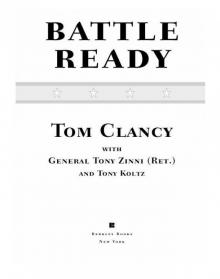 Battle Ready
Battle Ready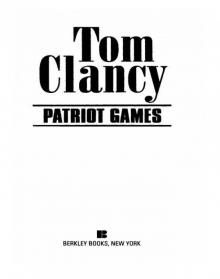 Patriot Games
Patriot Games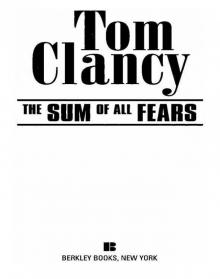 The Sum of All Fears
The Sum of All Fears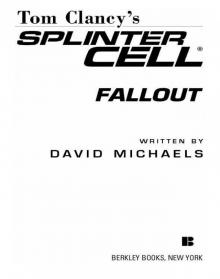 Fallout (2007)
Fallout (2007) Red Storm Rising
Red Storm Rising The Cardinal of the Kremlin
The Cardinal of the Kremlin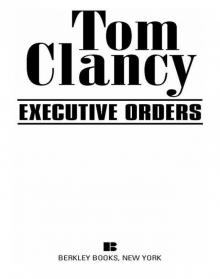 Executive Orders
Executive Orders Lincoln, the unknown
Lincoln, the unknown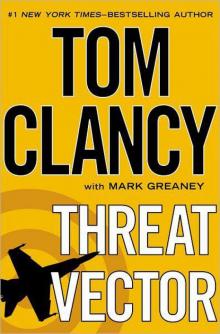 Threat Vector
Threat Vector The Hunted
The Hunted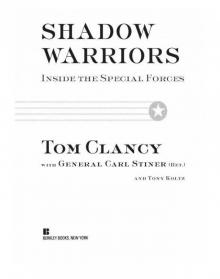 Shadow Warriors: Inside the Special Forces
Shadow Warriors: Inside the Special Forces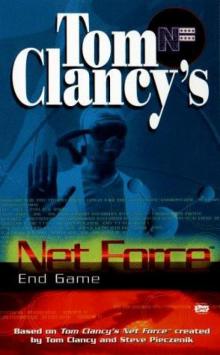 End Game
End Game Special Forces: A Guided Tour of U.S. Army Special Forces
Special Forces: A Guided Tour of U.S. Army Special Forces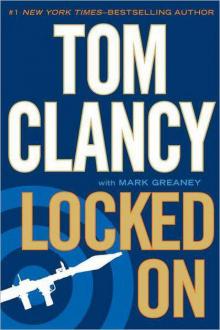 Locked On
Locked On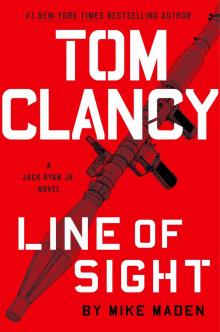 Line of Sight
Line of Sight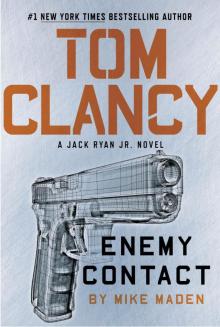 Tom Clancy Enemy Contact - Mike Maden
Tom Clancy Enemy Contact - Mike Maden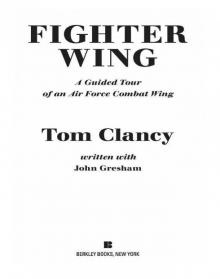 Fighter Wing: A Guided Tour of an Air Force Combat Wing
Fighter Wing: A Guided Tour of an Air Force Combat Wing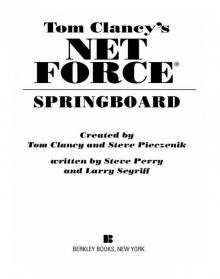 Springboard
Springboard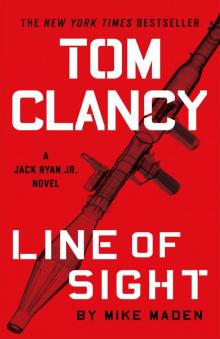 Line of Sight - Mike Maden
Line of Sight - Mike Maden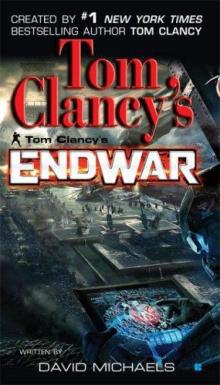 EndWar
EndWar Dead or Alive
Dead or Alive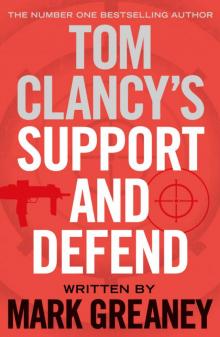 Tom Clancy Support and Defend
Tom Clancy Support and Defend Checkmate
Checkmate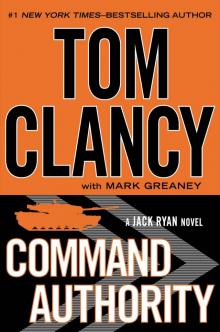 Command Authority
Command Authority Carrier: A Guided Tour of an Aircraft Carrier
Carrier: A Guided Tour of an Aircraft Carrier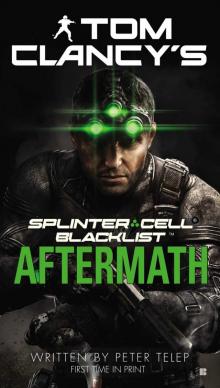 Blacklist Aftermath
Blacklist Aftermath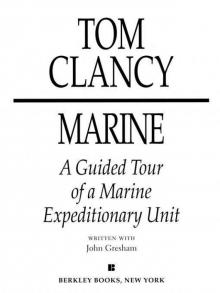 Marine: A Guided Tour of a Marine Expeditionary Unit
Marine: A Guided Tour of a Marine Expeditionary Unit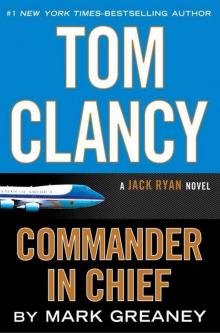 Commander-In-Chief
Commander-In-Chief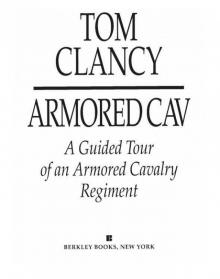 Armored Cav: A Guided Tour of an Armored Cavalry Regiment
Armored Cav: A Guided Tour of an Armored Cavalry Regiment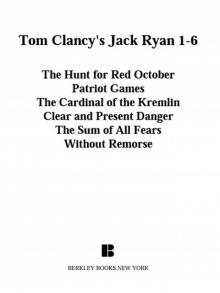 Tom Clancy's Jack Ryan Books 1-6
Tom Clancy's Jack Ryan Books 1-6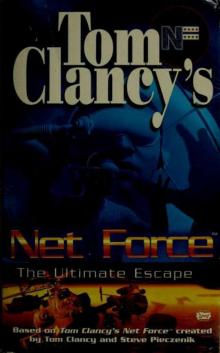 The Ultimate Escape
The Ultimate Escape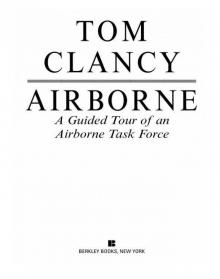 Airborne: A Guided Tour of an Airborne Task Force
Airborne: A Guided Tour of an Airborne Task Force Debt of Honor
Debt of Honor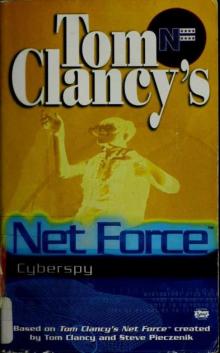 Cyberspy
Cyberspy Point of Contact
Point of Contact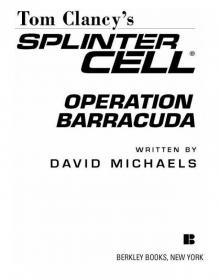 Operation Barracuda (2005)
Operation Barracuda (2005)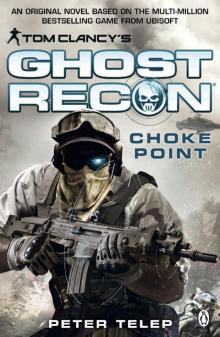 Choke Point
Choke Point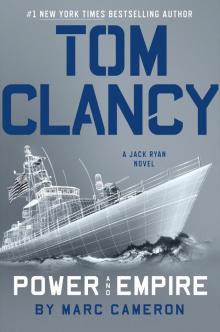 Power and Empire
Power and Empire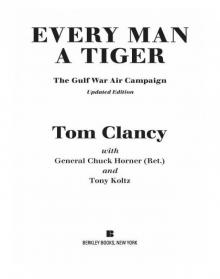 Every Man a Tiger: The Gulf War Air Campaign
Every Man a Tiger: The Gulf War Air Campaign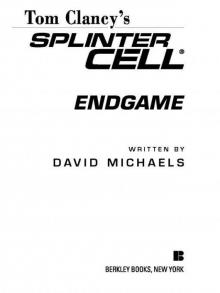 Endgame (1998)
Endgame (1998)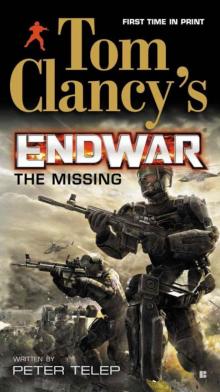 EndWar: The Missing
EndWar: The Missing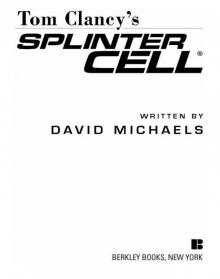 Splinter Cell (2004)
Splinter Cell (2004) The Great Race
The Great Race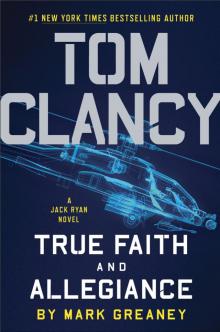 True Faith and Allegiance
True Faith and Allegiance Deathworld
Deathworld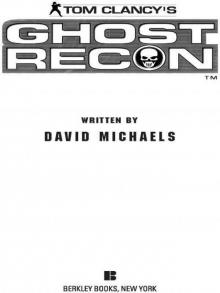 Ghost Recon (2008)
Ghost Recon (2008) Duel Identity
Duel Identity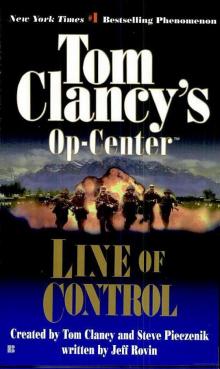 Line of Control o-8
Line of Control o-8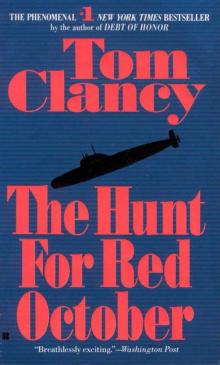 The Hunt for Red October jr-3
The Hunt for Red October jr-3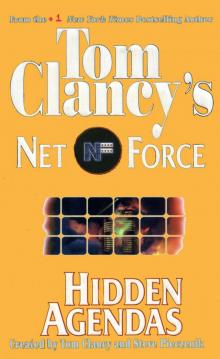 Hidden Agendas nf-2
Hidden Agendas nf-2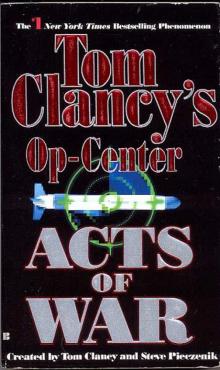 Acts of War oc-4
Acts of War oc-4 Ruthless.Com pp-2
Ruthless.Com pp-2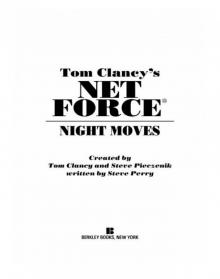 Night Moves
Night Moves The Hounds of Rome - Mystery of a Fugitive Priest
The Hounds of Rome - Mystery of a Fugitive Priest Into the Storm: On the Ground in Iraq sic-1
Into the Storm: On the Ground in Iraq sic-1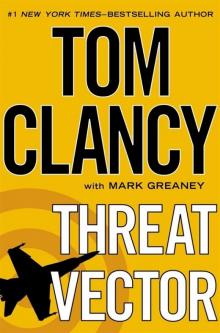 Threat Vector jrj-4
Threat Vector jrj-4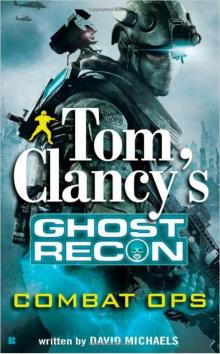 Combat Ops gr-2
Combat Ops gr-2 Virtual Vandals nfe-1
Virtual Vandals nfe-1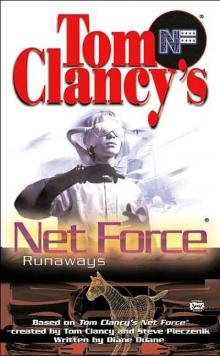 Runaways nfe-16
Runaways nfe-16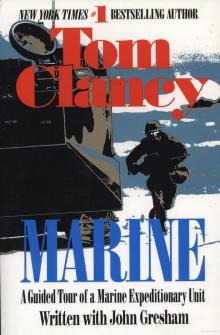 Marine: A Guided Tour of a Marine Expeditionary Unit tcml-4
Marine: A Guided Tour of a Marine Expeditionary Unit tcml-4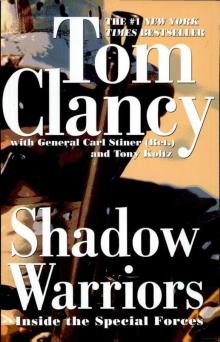 Shadow Warriors: Inside the Special Forces sic-3
Shadow Warriors: Inside the Special Forces sic-3 Jack Ryan Books 1-6
Jack Ryan Books 1-6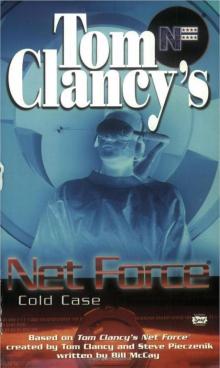 Cold Case nfe-15
Cold Case nfe-15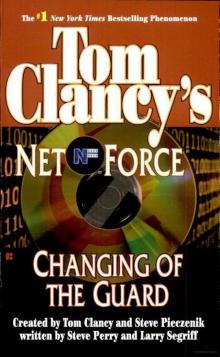 Changing of the Guard nf-8
Changing of the Guard nf-8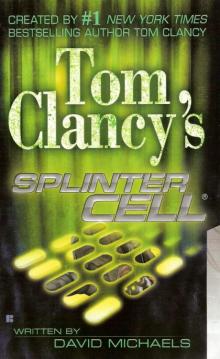 Splinter Cell sc-1
Splinter Cell sc-1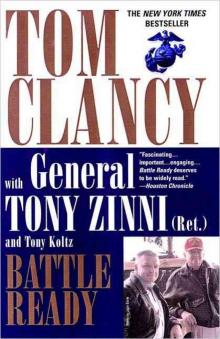 Battle Ready sic-4
Battle Ready sic-4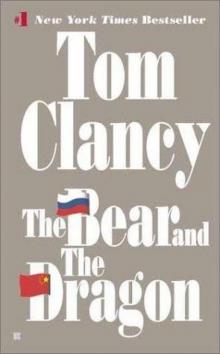 The Bear and the Dragon jrao-11
The Bear and the Dragon jrao-11 Fighter Wing: A Guided Tour of an Air Force Combat Wing tcml-3
Fighter Wing: A Guided Tour of an Air Force Combat Wing tcml-3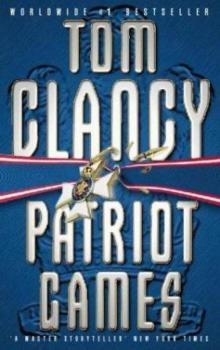 Patriot Games jr-1
Patriot Games jr-1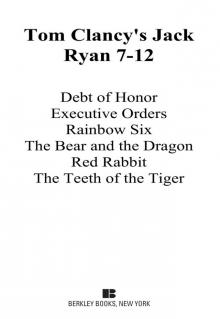 Jack Ryan Books 7-12
Jack Ryan Books 7-12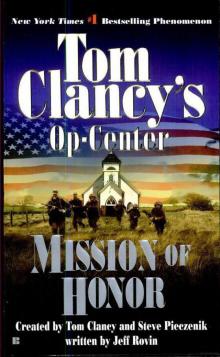 Mission of Honor o-9
Mission of Honor o-9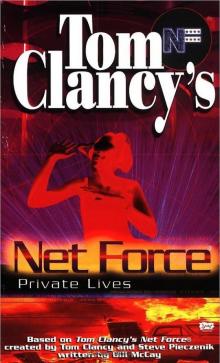 Private Lives nfe-9
Private Lives nfe-9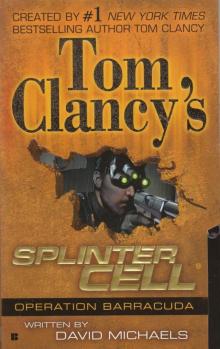 Operation Barracuda sc-2
Operation Barracuda sc-2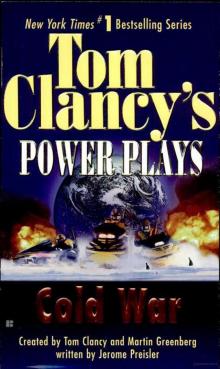 Cold War pp-5
Cold War pp-5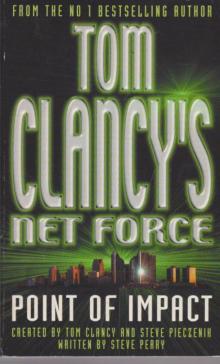 Point of Impact nf-5
Point of Impact nf-5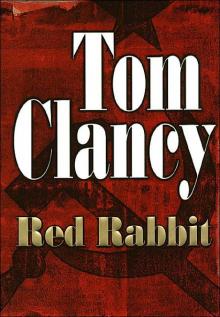 Red Rabbit jr-9
Red Rabbit jr-9 The Deadliest Game nfe-2
The Deadliest Game nfe-2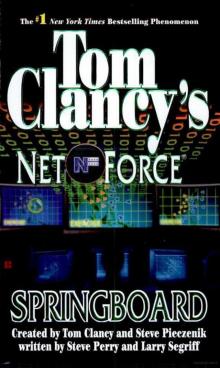 Springboard nf-9
Springboard nf-9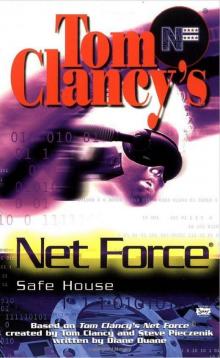 Safe House nfe-10
Safe House nfe-10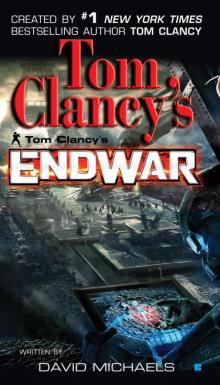 EndWar e-1
EndWar e-1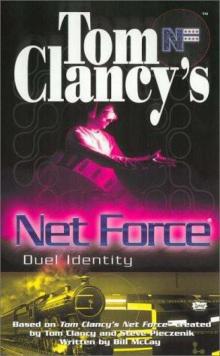 Duel Identity nfe-12
Duel Identity nfe-12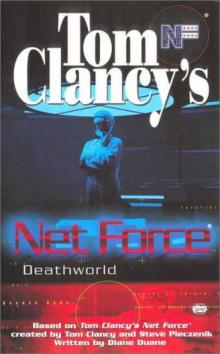 Deathworld nfe-13
Deathworld nfe-13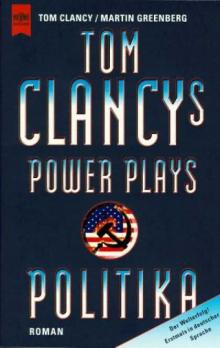 Politika pp-1
Politika pp-1 Rainbow Six jr-9
Rainbow Six jr-9 Tom Clancy's Power Plays 1 - 4
Tom Clancy's Power Plays 1 - 4 Endgame sc-6
Endgame sc-6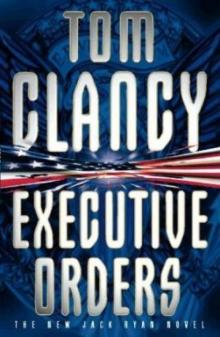 Executive Orders jr-7
Executive Orders jr-7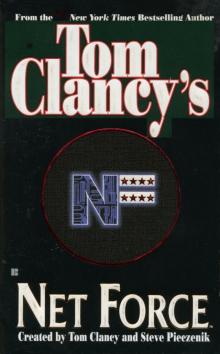 Net Force nf-1
Net Force nf-1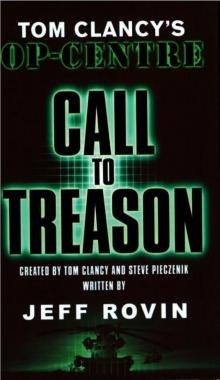 Call to Treason o-11
Call to Treason o-11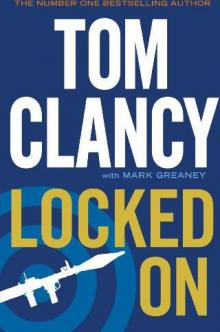 Locked On jrj-3
Locked On jrj-3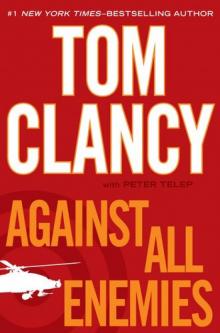 Against All Enemies
Against All Enemies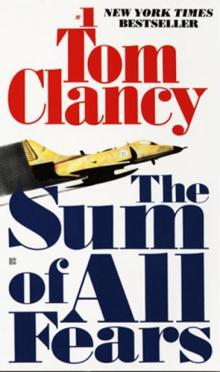 The Sum of All Fears jr-7
The Sum of All Fears jr-7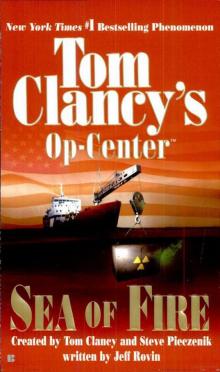 Sea of Fire o-10
Sea of Fire o-10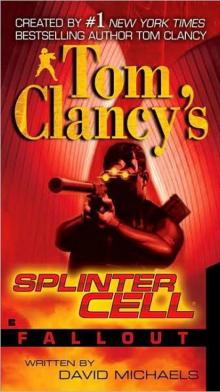 Fallout sc-4
Fallout sc-4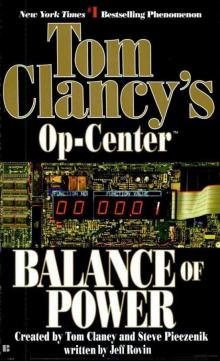 Balance of Power o-5
Balance of Power o-5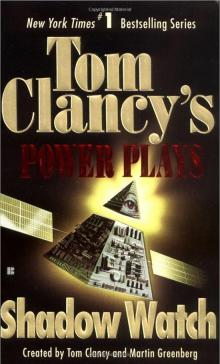 Shadow Watch pp-3
Shadow Watch pp-3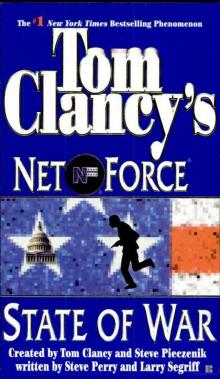 State of War nf-7
State of War nf-7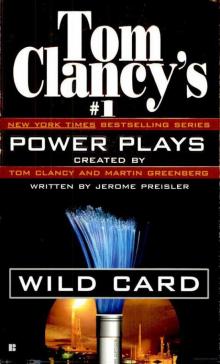 Wild Card pp-8
Wild Card pp-8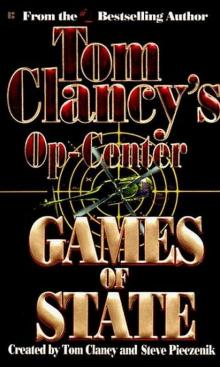 Games of State o-3
Games of State o-3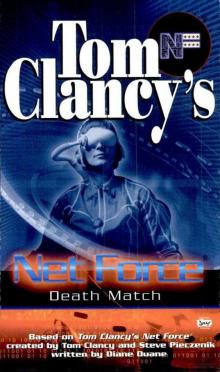 Death Match nfe-18
Death Match nfe-18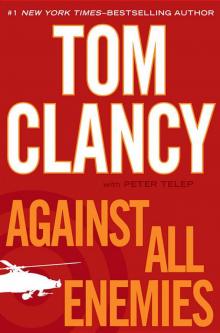 Against All Enemies mm-1
Against All Enemies mm-1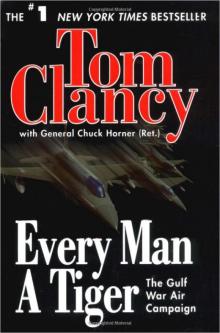 Every Man a Tiger: The Gulf War Air Campaign sic-2
Every Man a Tiger: The Gulf War Air Campaign sic-2 Cybernation nf-6
Cybernation nf-6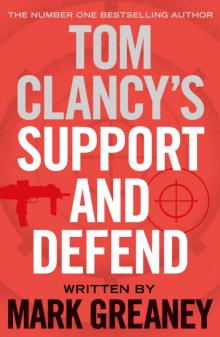 Support and Defend
Support and Defend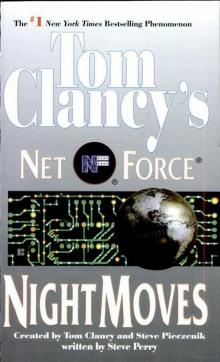 Night Moves nf-3
Night Moves nf-3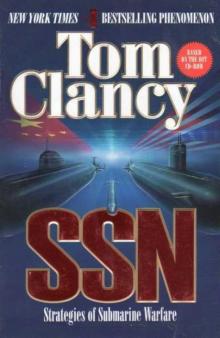 SSN
SSN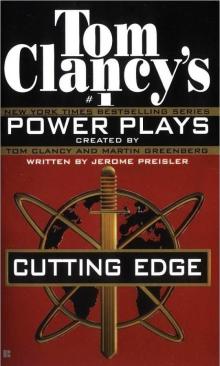 Cutting Edge pp-6
Cutting Edge pp-6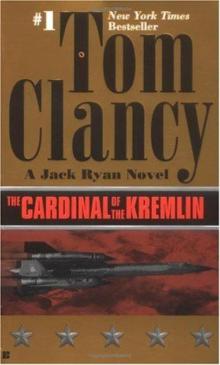 The Cardinal of the Kremlin jrao-5
The Cardinal of the Kremlin jrao-5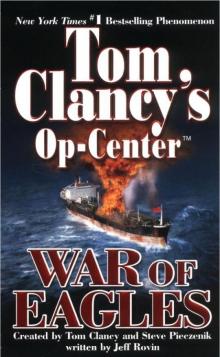 War of Eagles o-12
War of Eagles o-12 Op-Center o-1
Op-Center o-1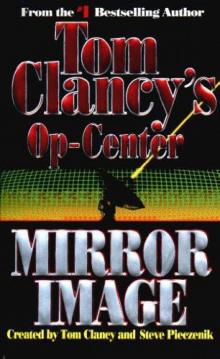 Mirror Image o-2
Mirror Image o-2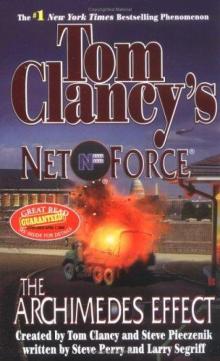 The Archimedes Effect nf-10
The Archimedes Effect nf-10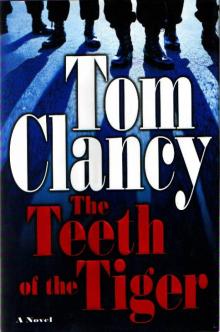 Teeth of the Tiger jrj-1
Teeth of the Tiger jrj-1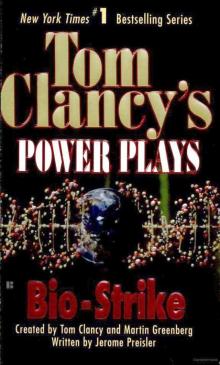 Bio-Strike pp-4
Bio-Strike pp-4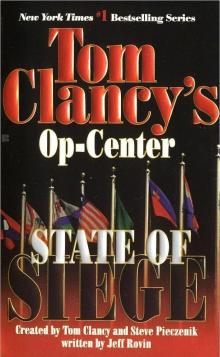 State of Siege o-6
State of Siege o-6 Debt of Honor jr-6
Debt of Honor jr-6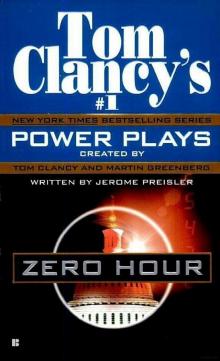 Zero Hour pp-7
Zero Hour pp-7 Ghost Recon gr-1
Ghost Recon gr-1 Command Authority jr-10
Command Authority jr-10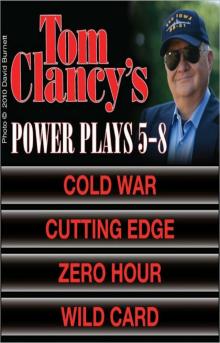 Tom Clancy's Power Plays 5 - 8
Tom Clancy's Power Plays 5 - 8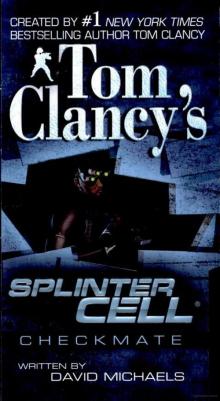 Checkmate sc-3
Checkmate sc-3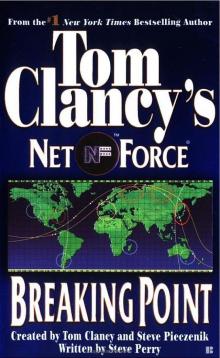 Breaking Point nf-4
Breaking Point nf-4 Gameprey nfe-11
Gameprey nfe-11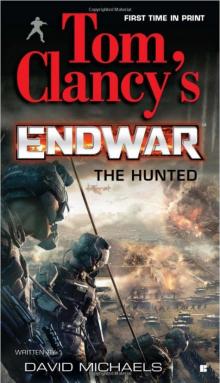 The Hunted e-2
The Hunted e-2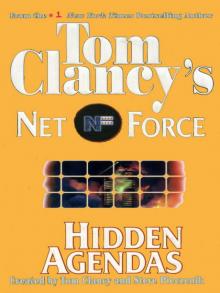 Hidden Agendas
Hidden Agendas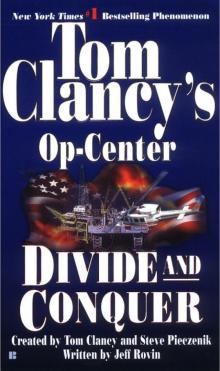 Divide and Conquer o-7
Divide and Conquer o-7